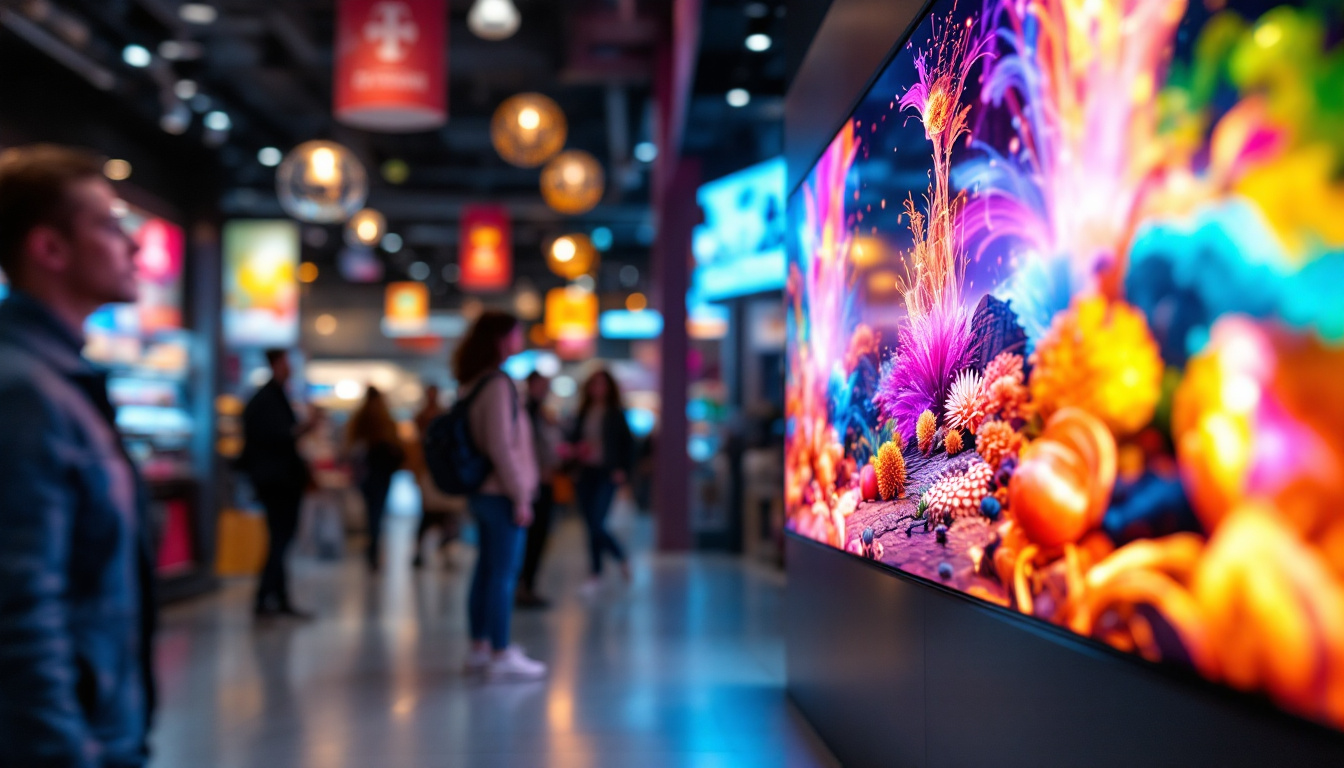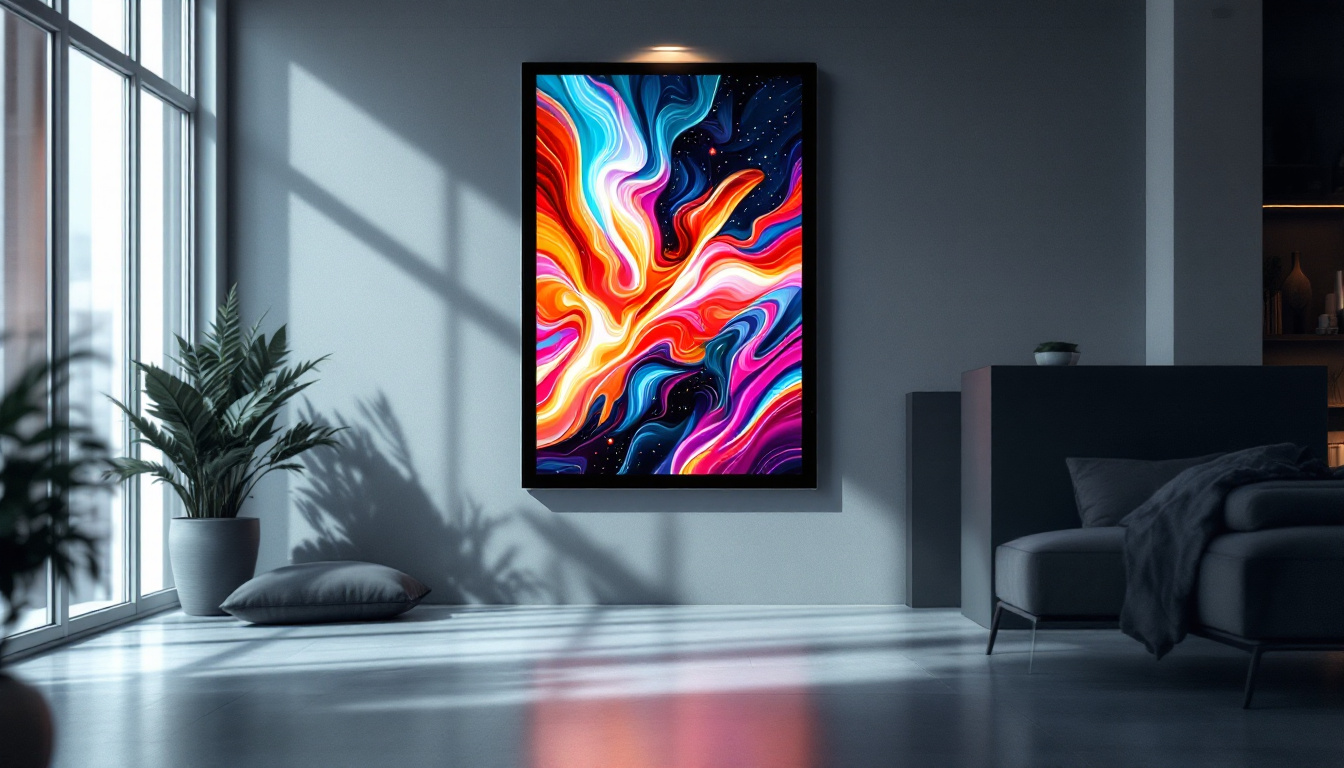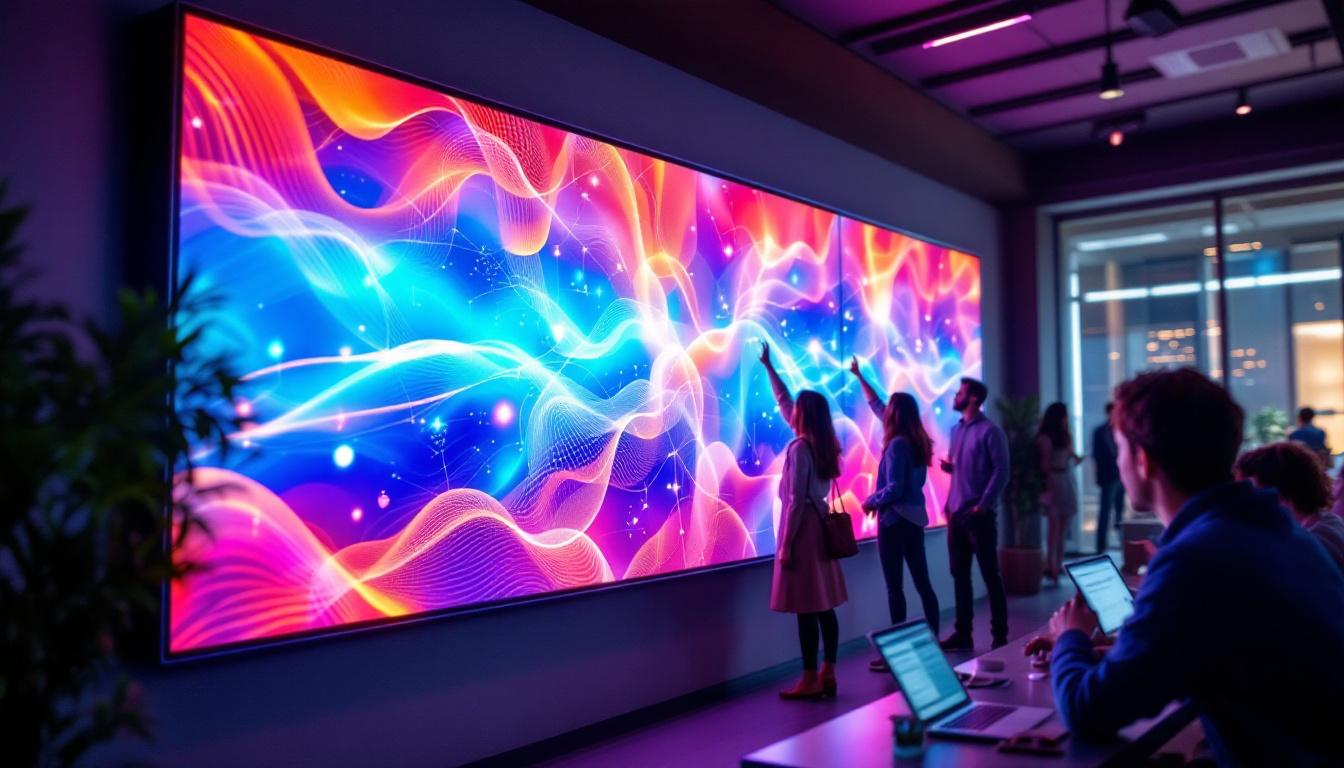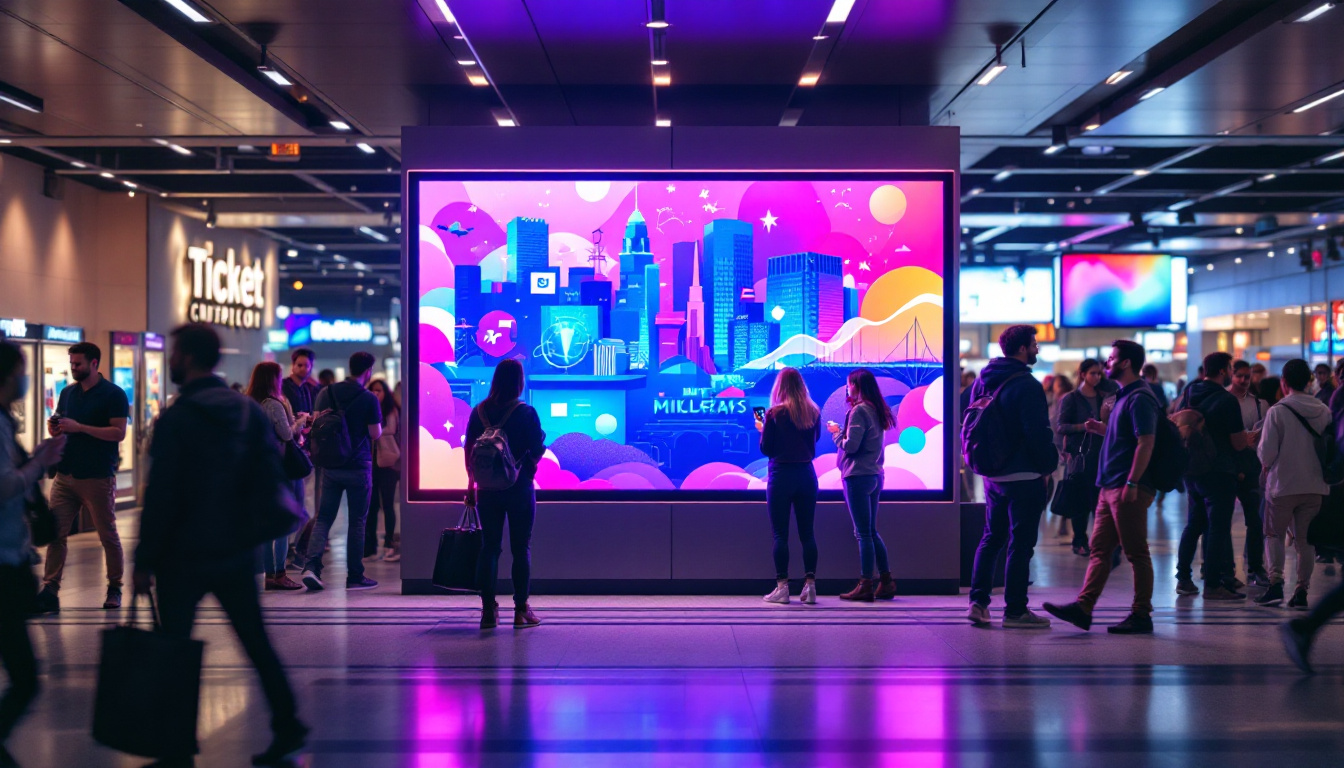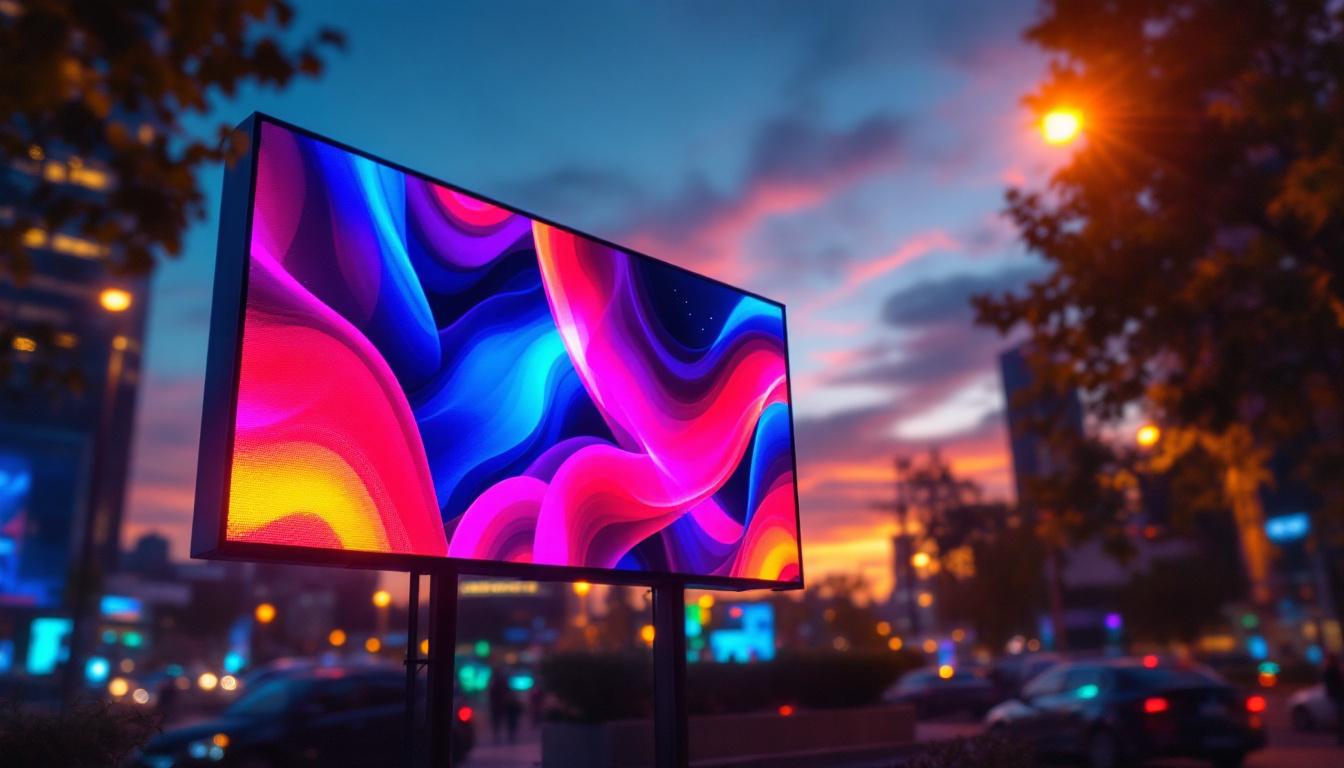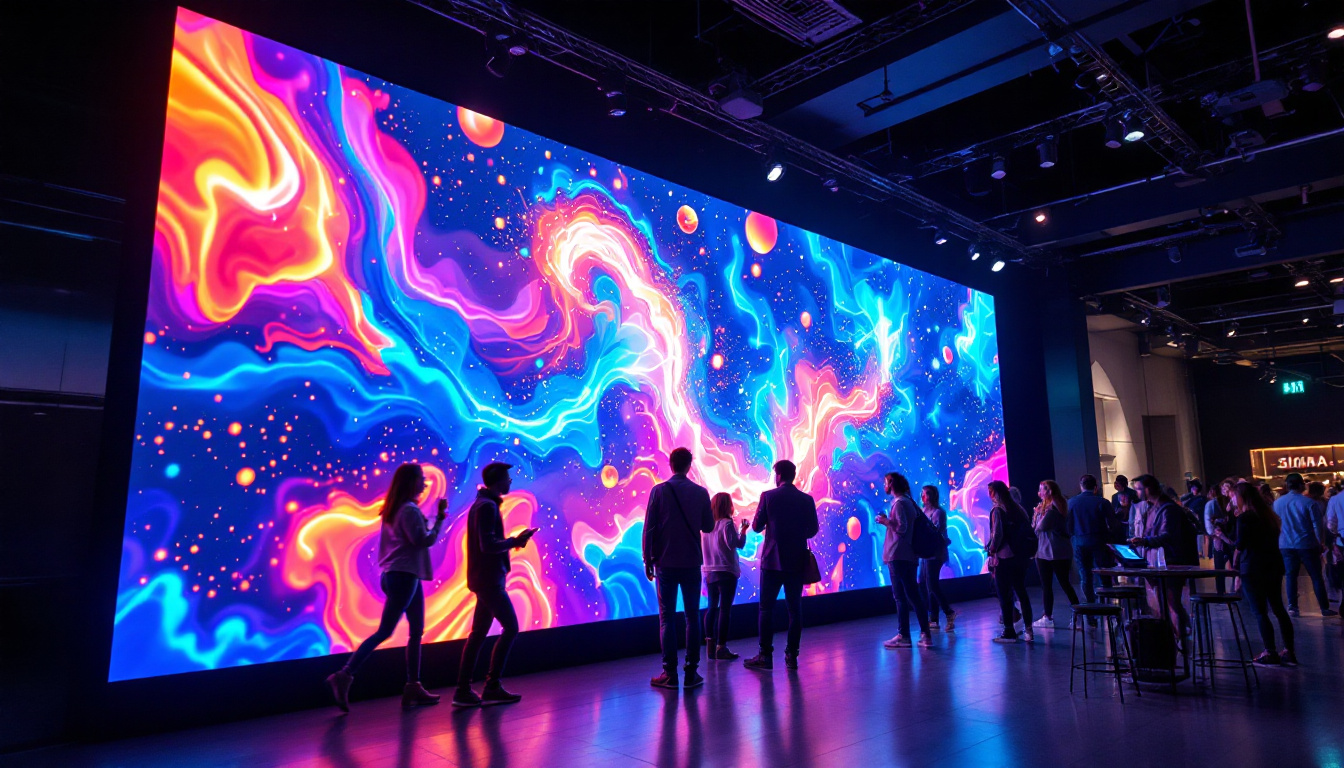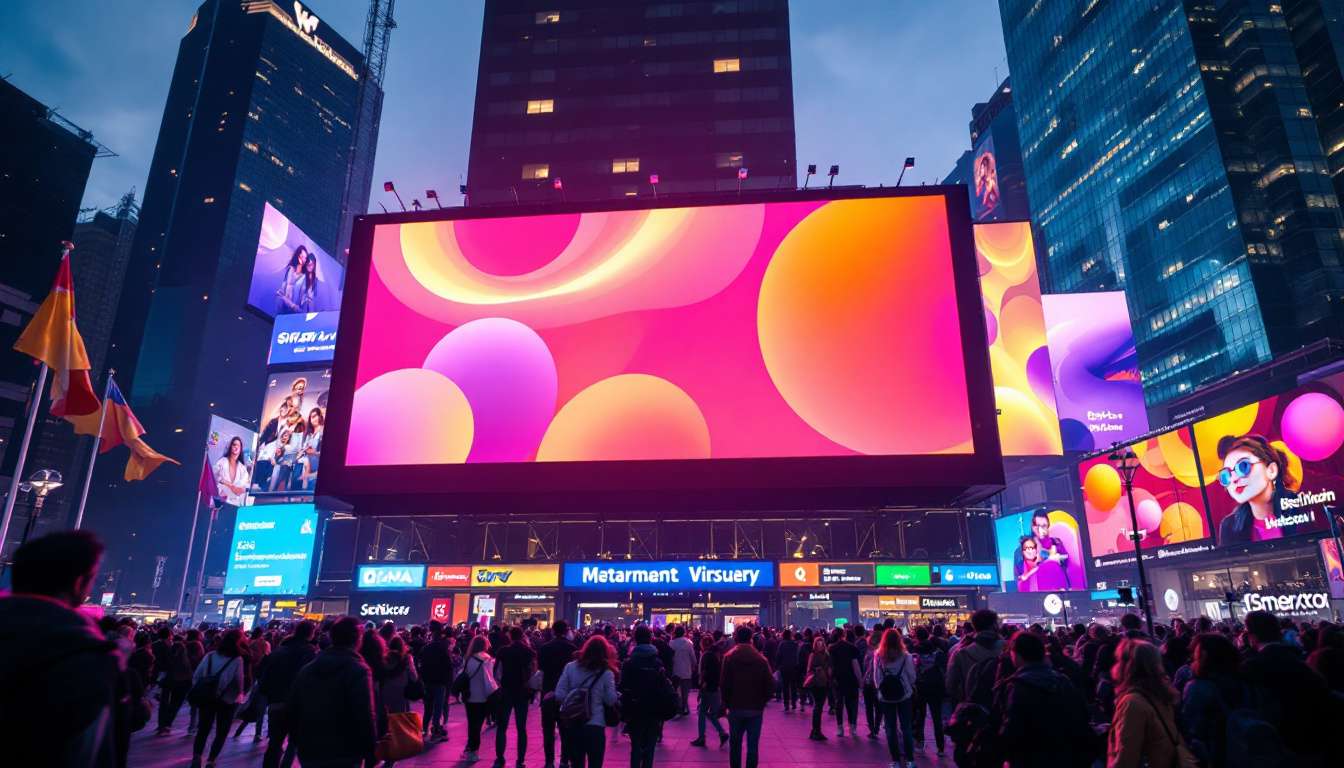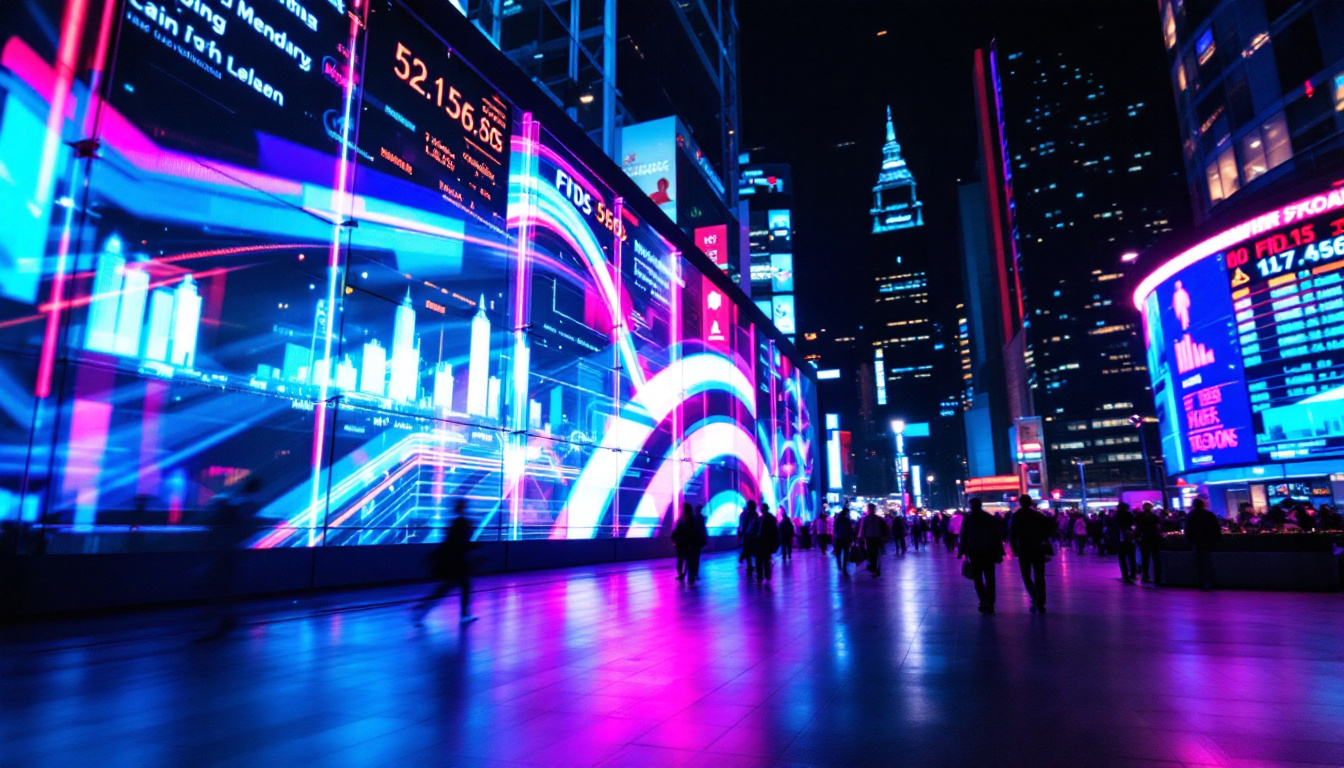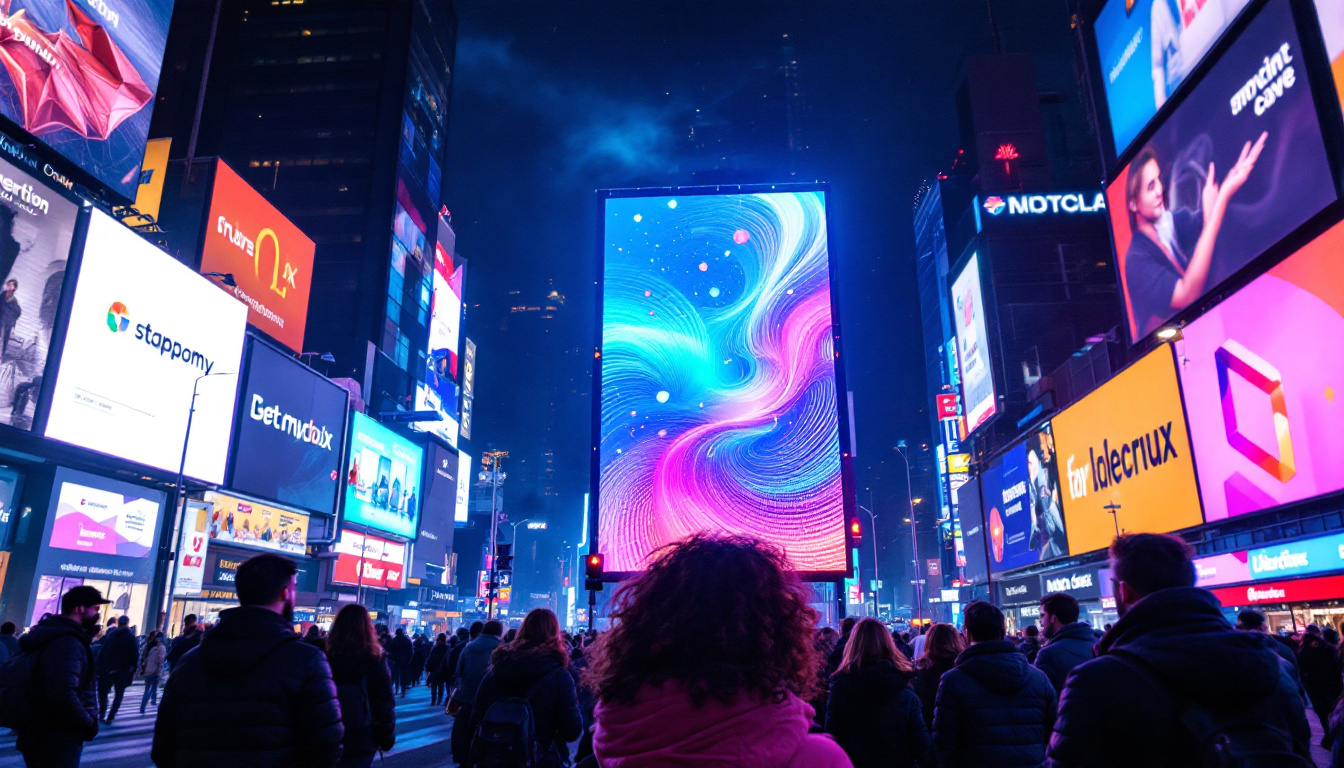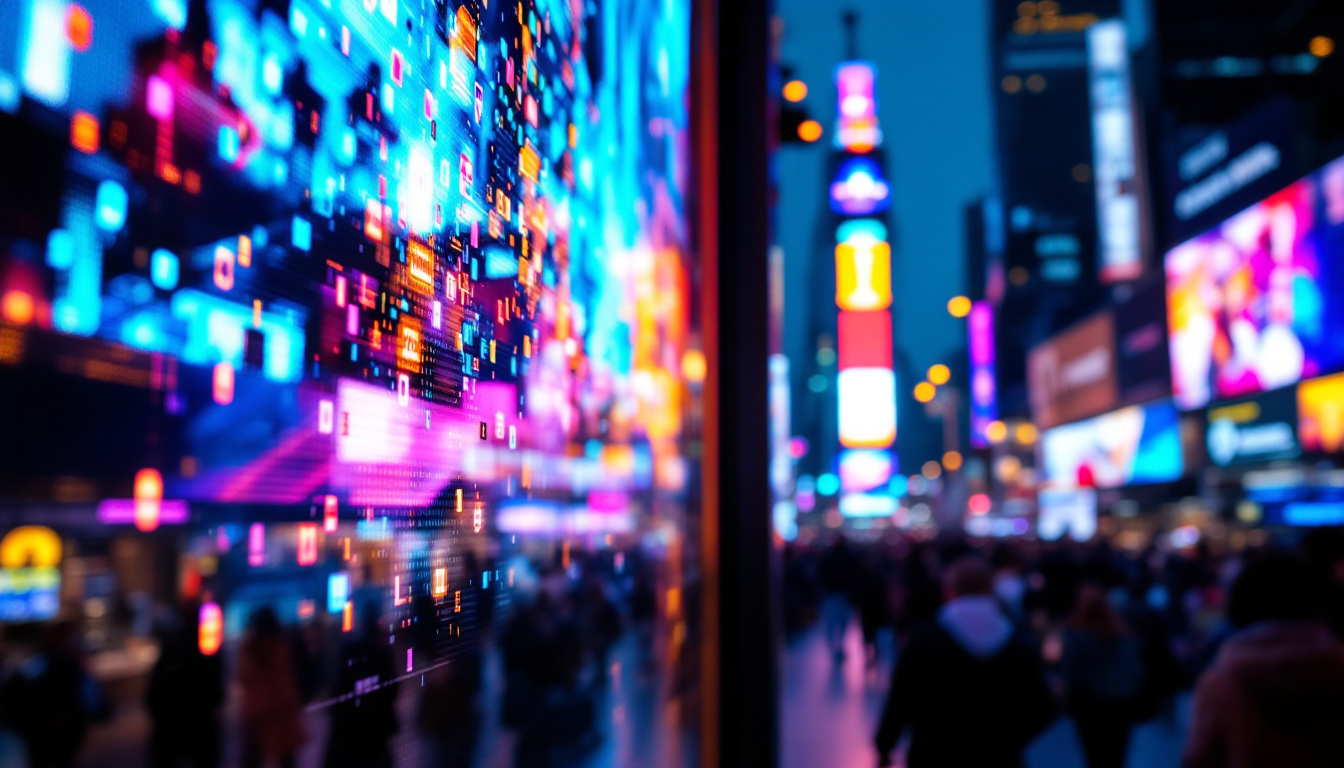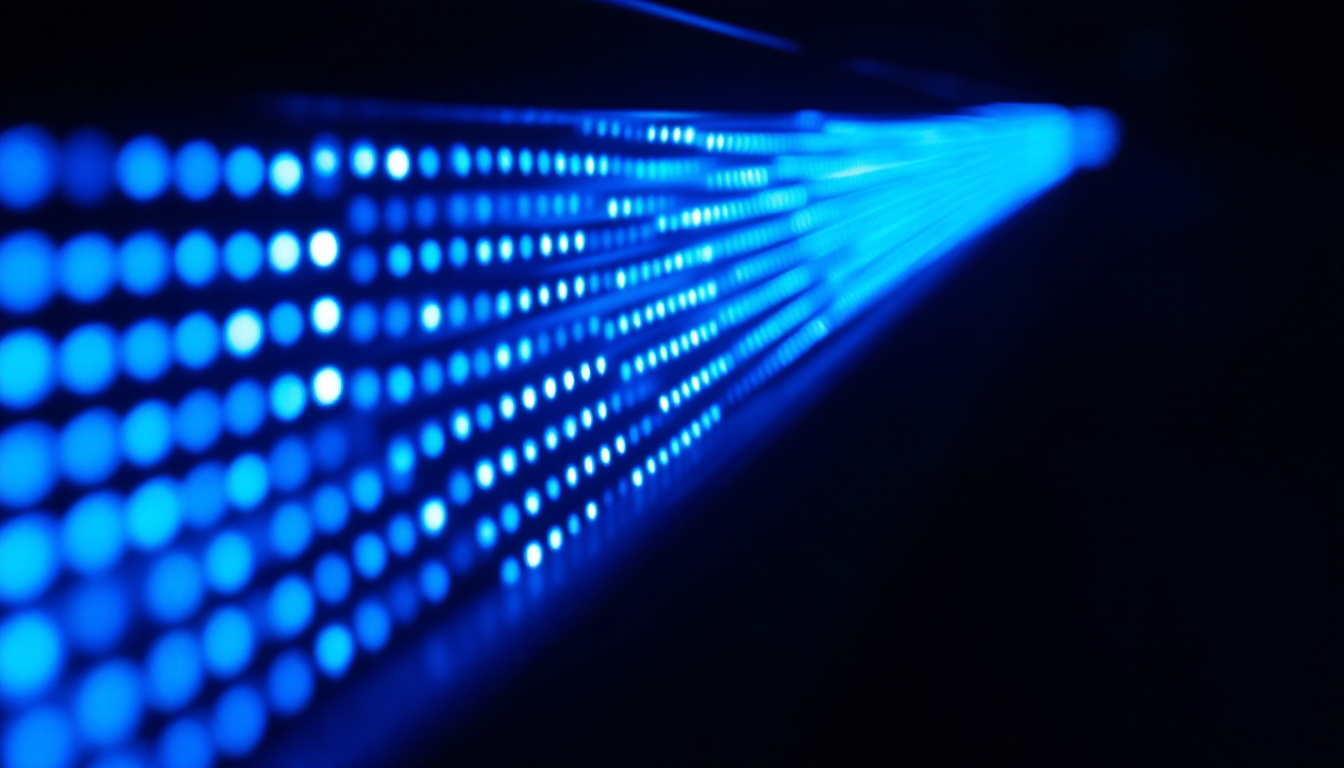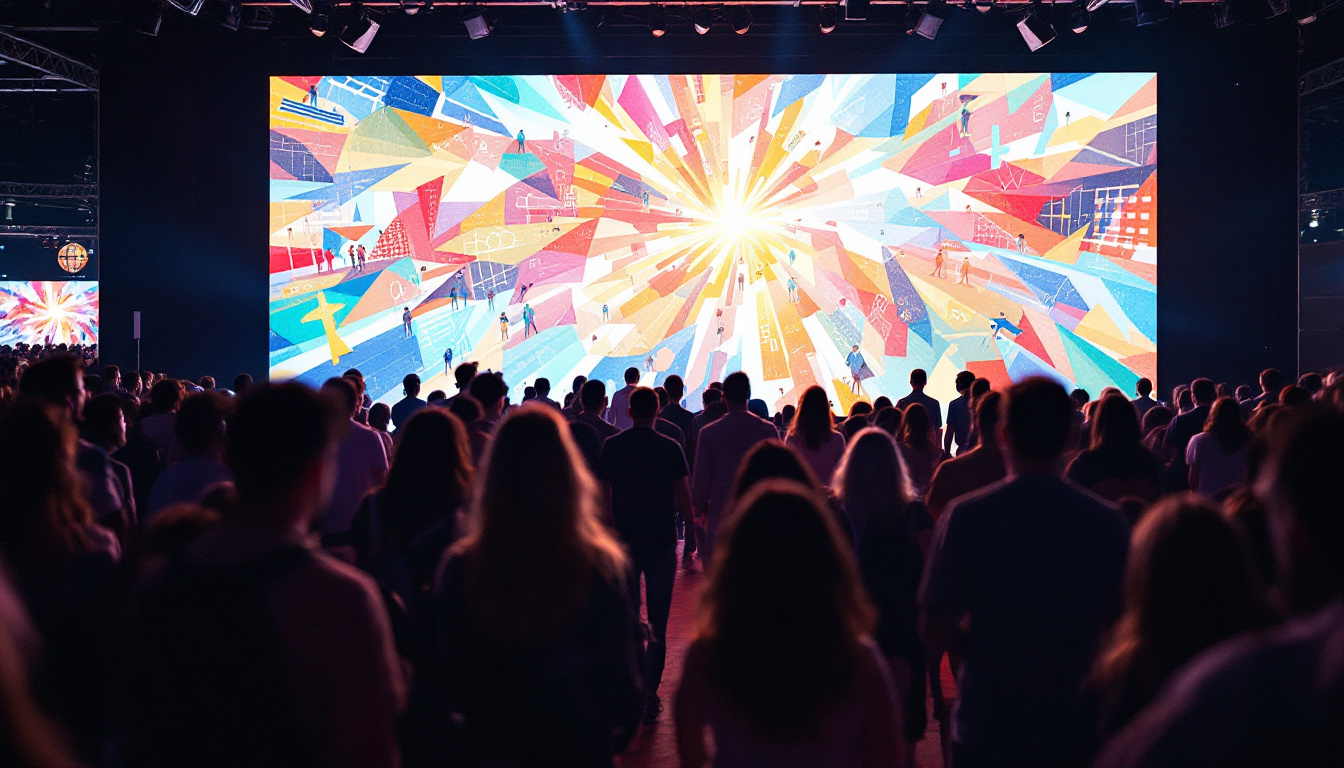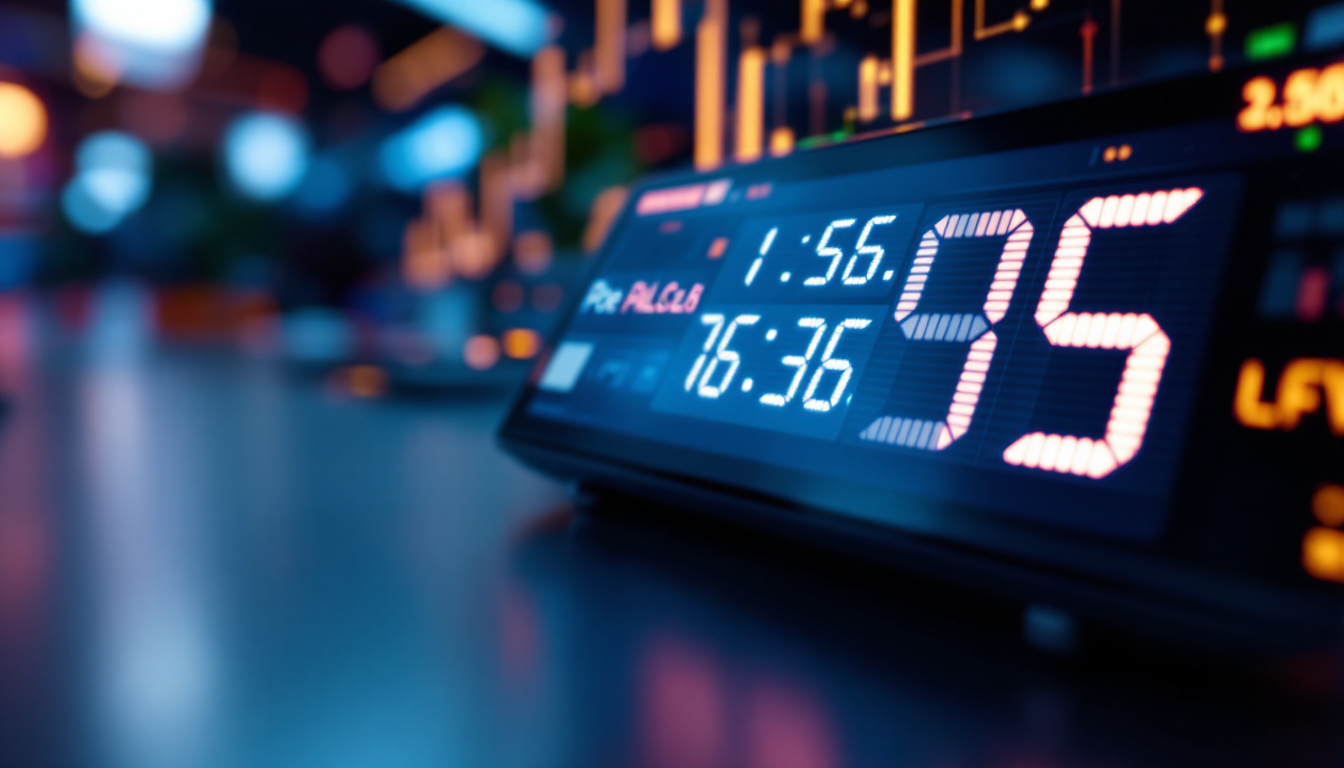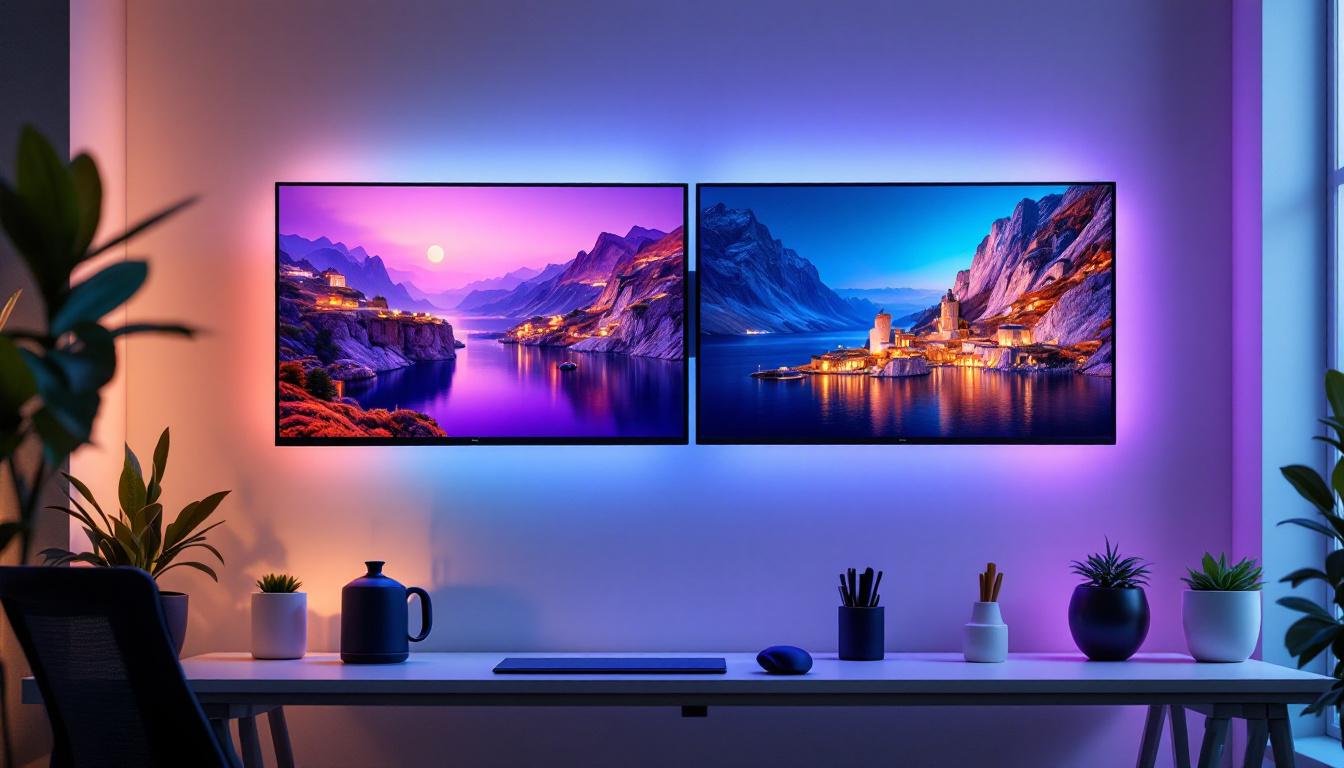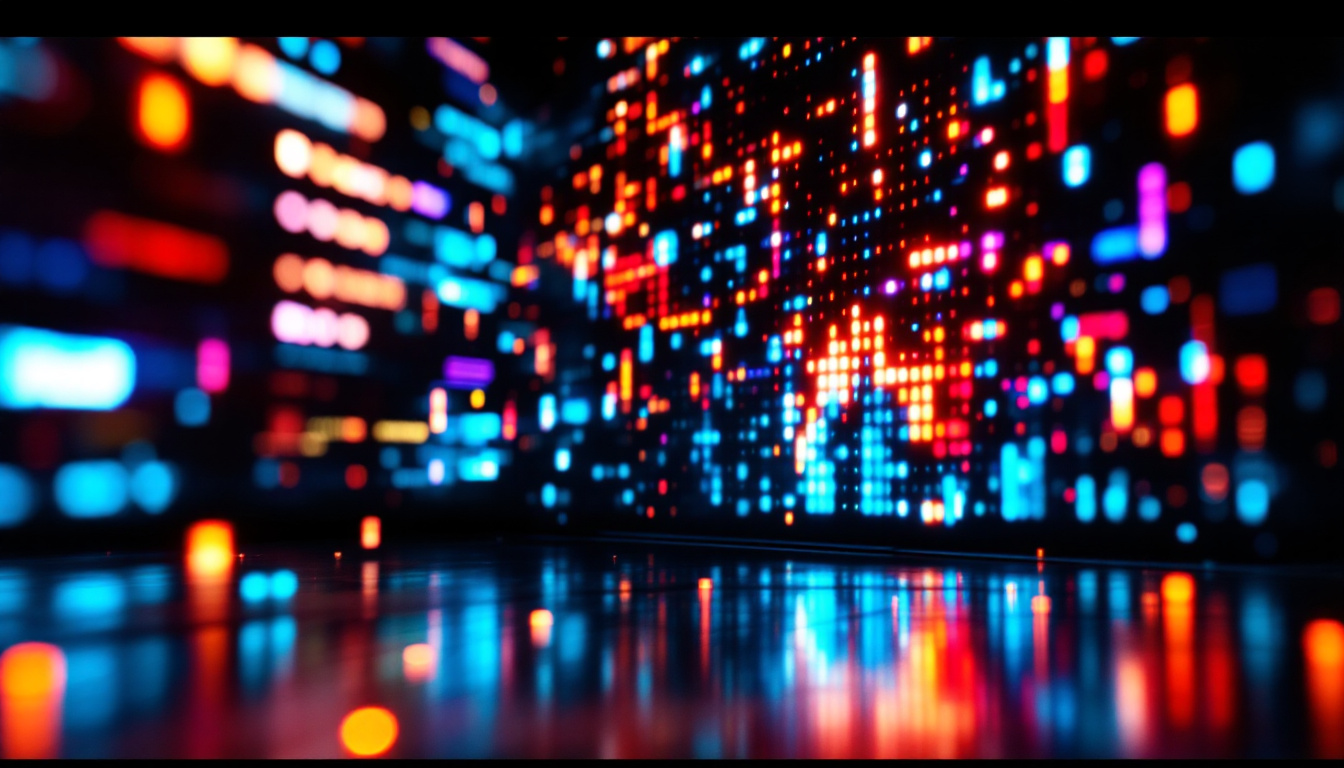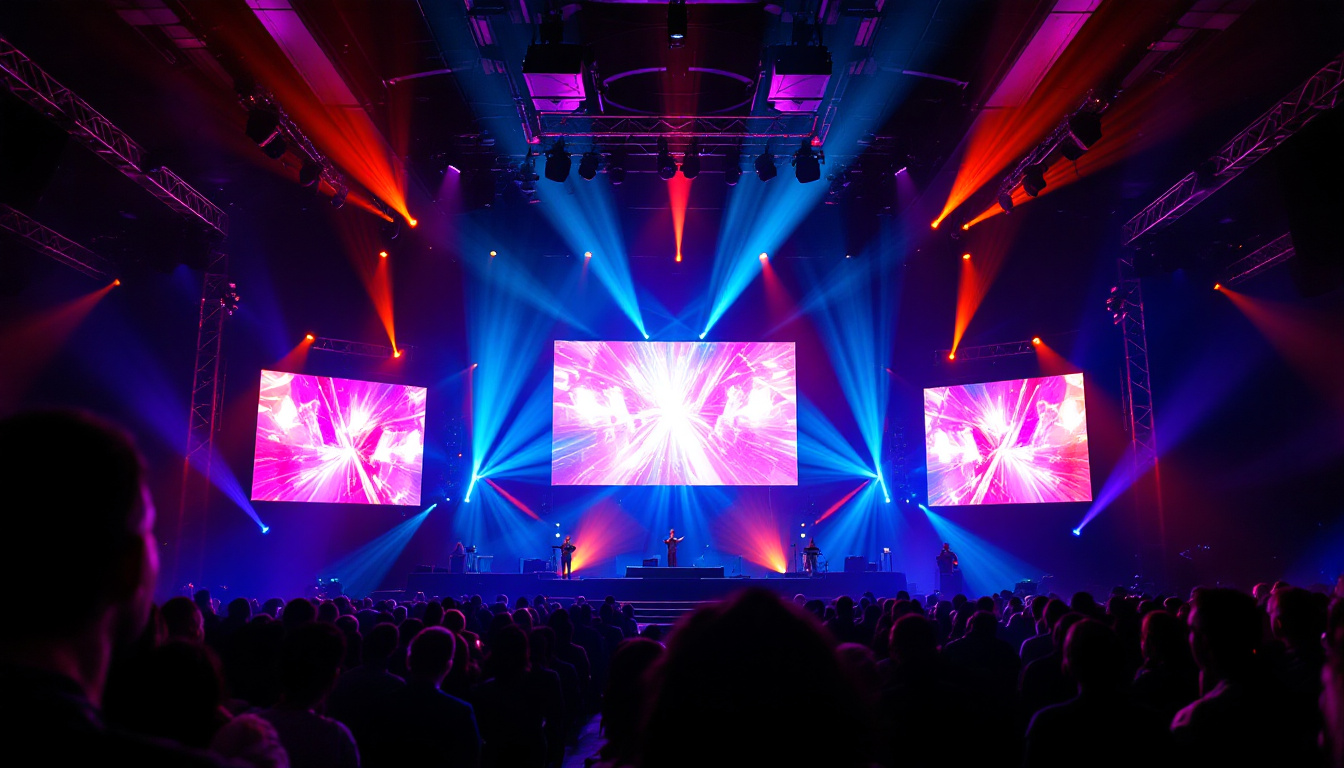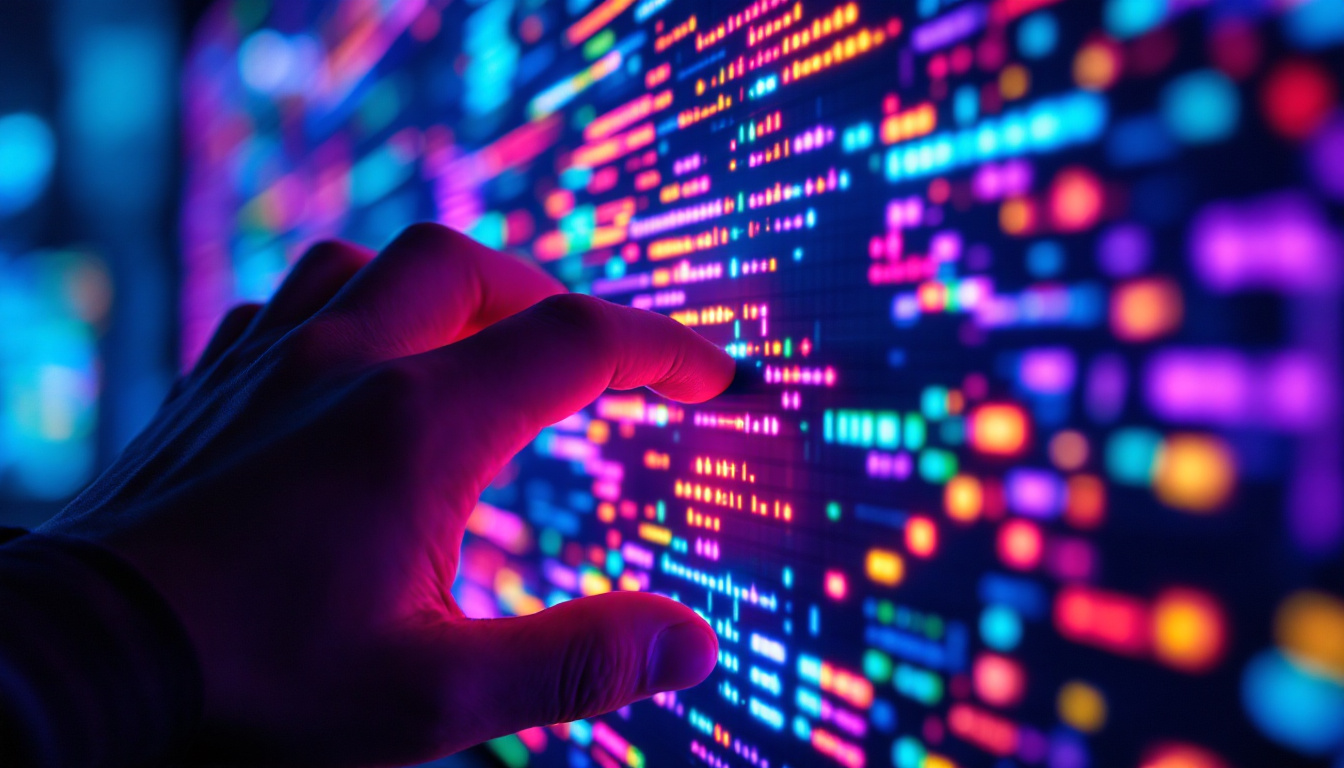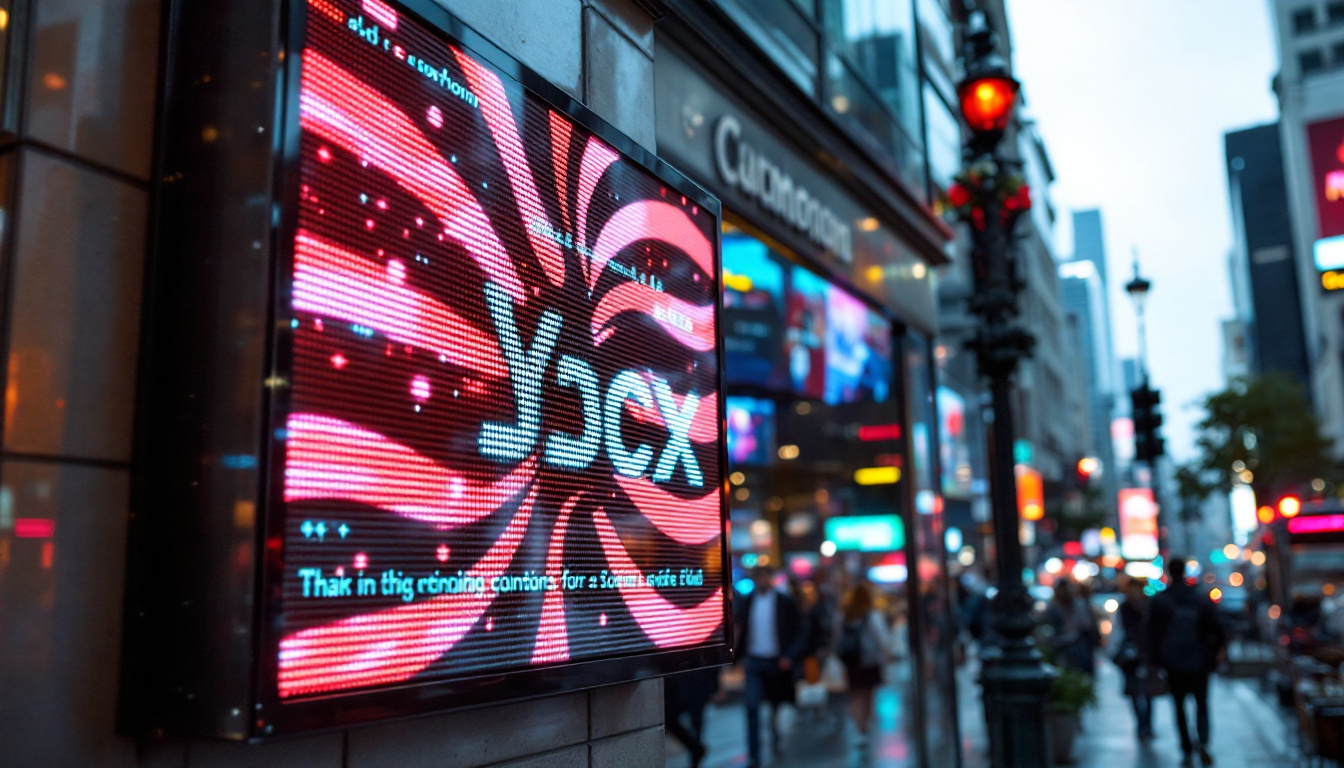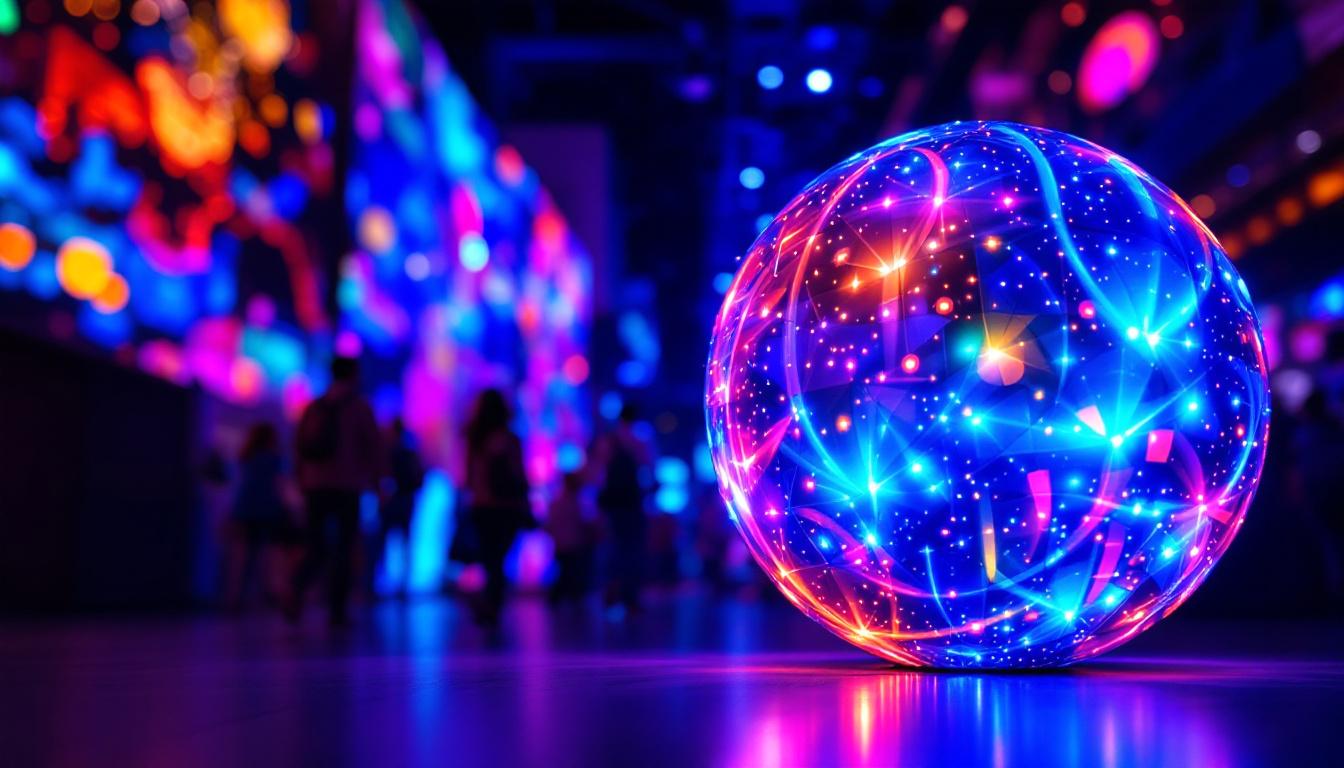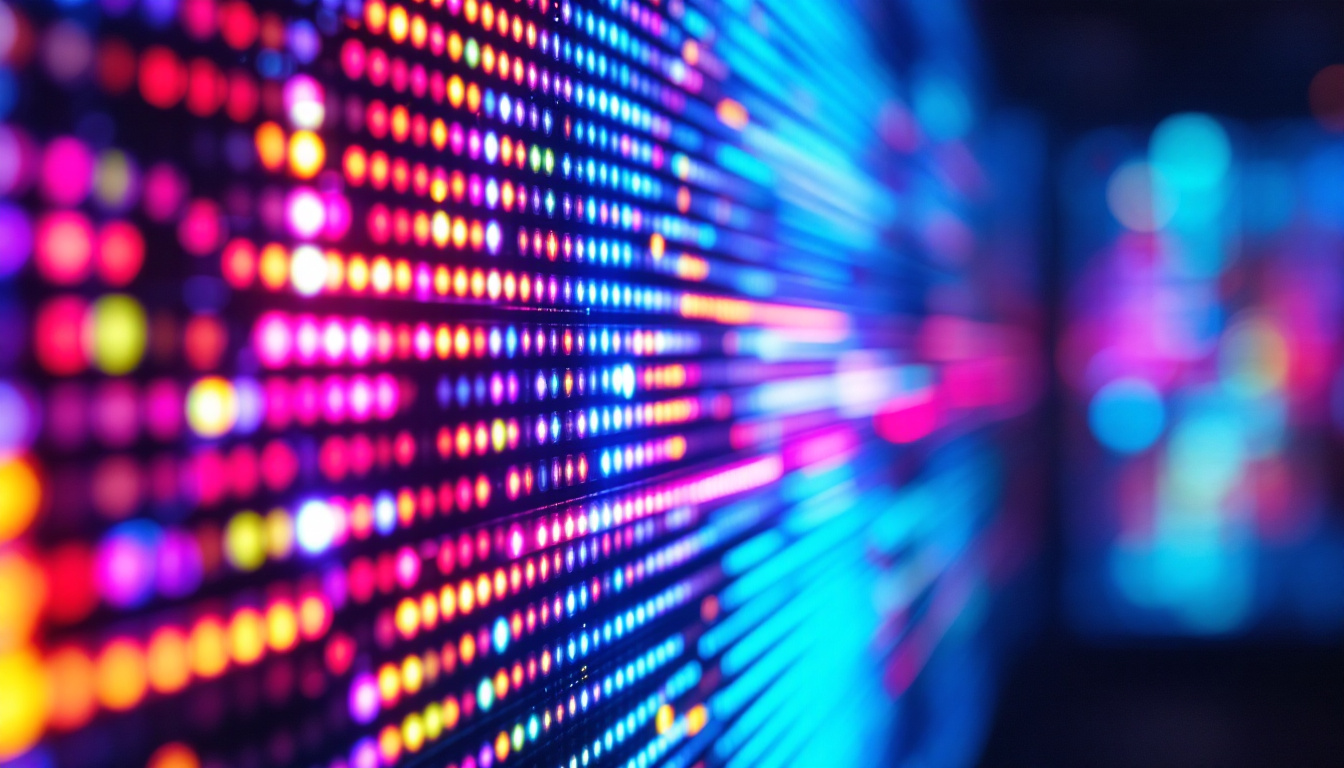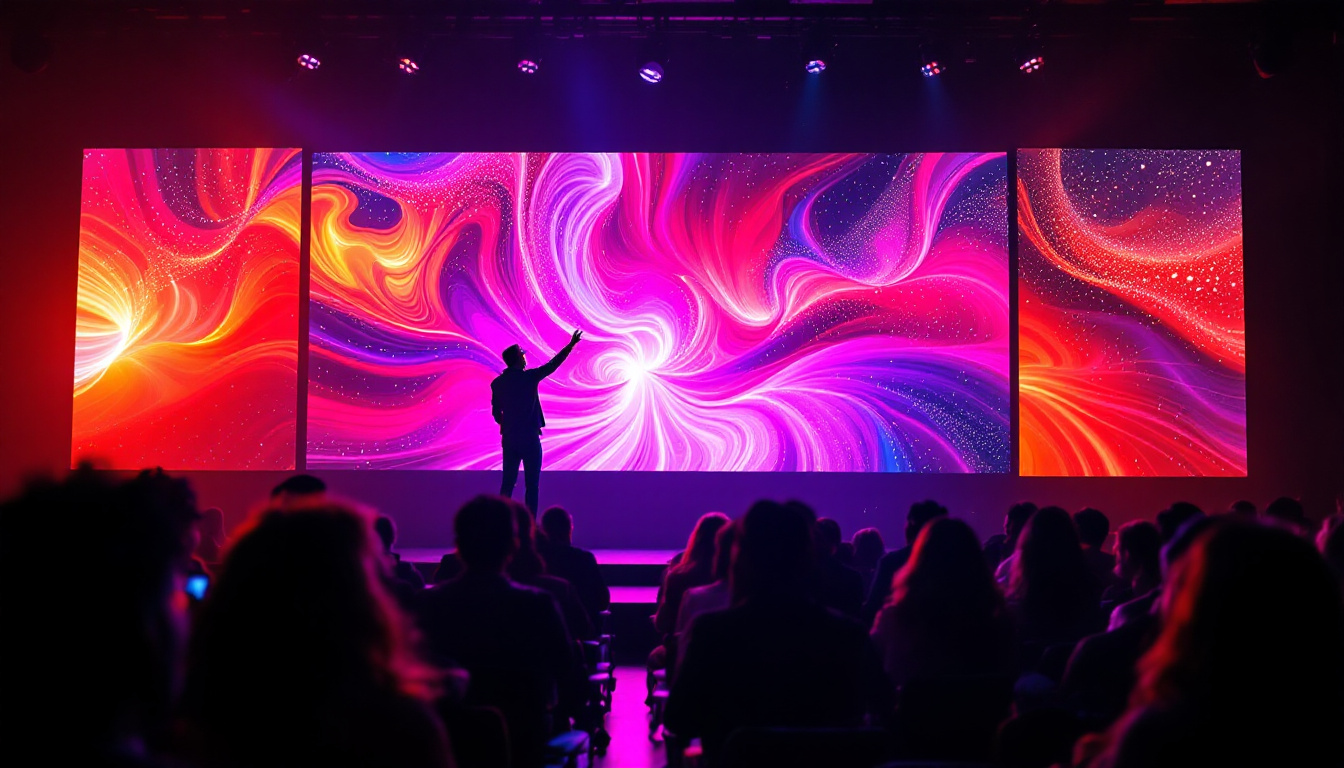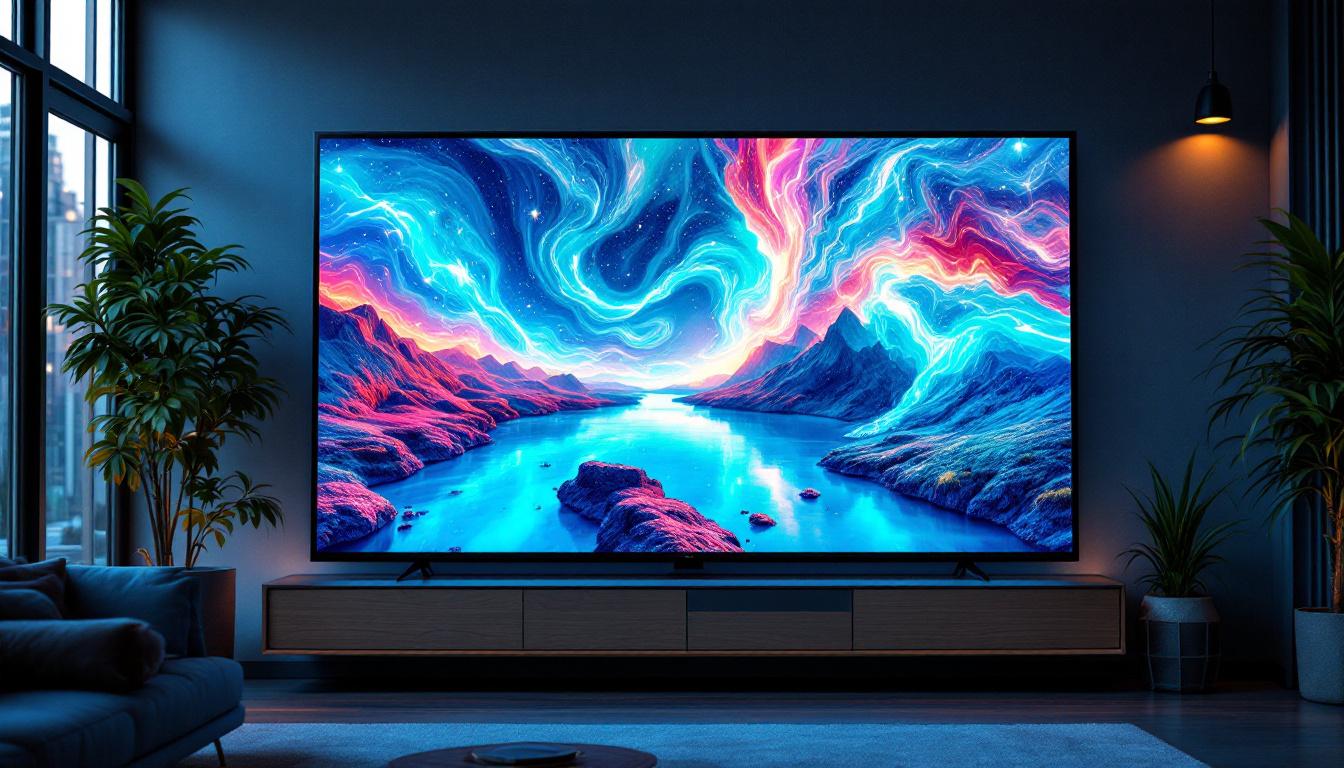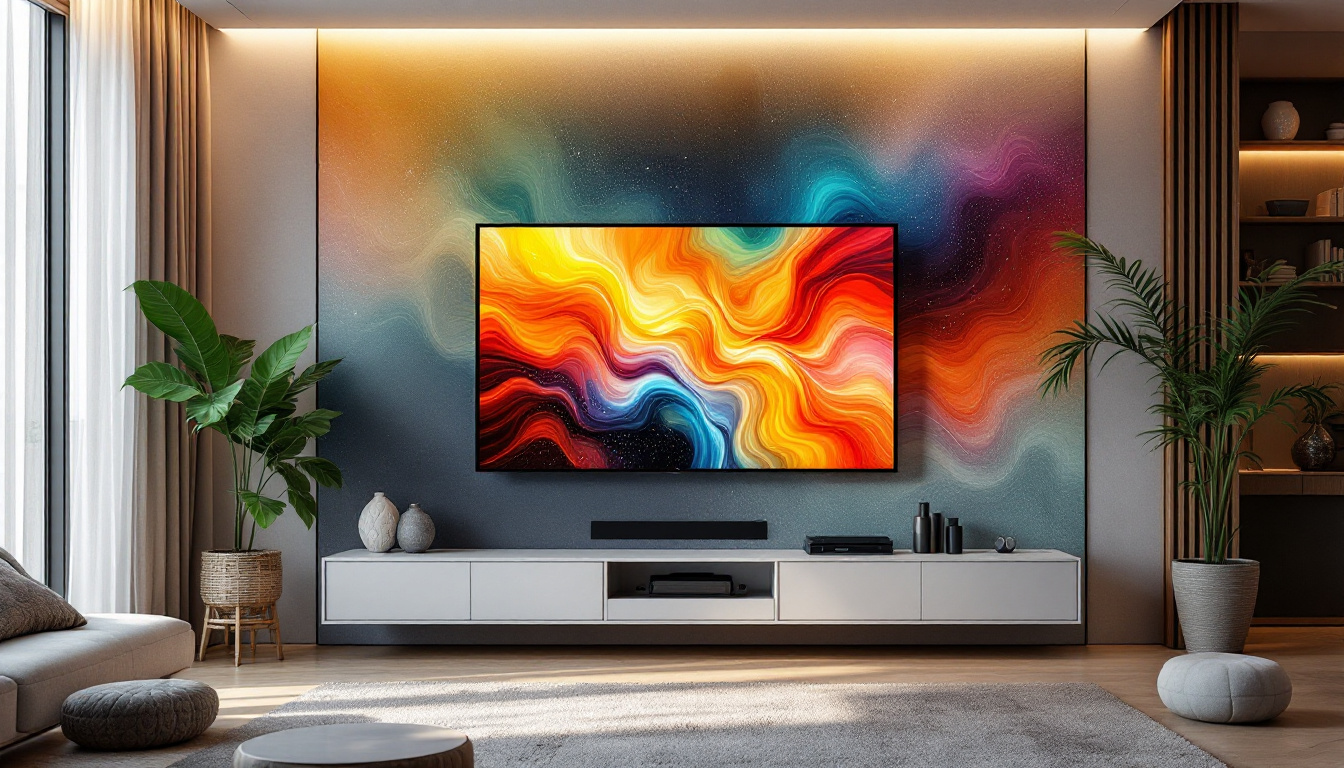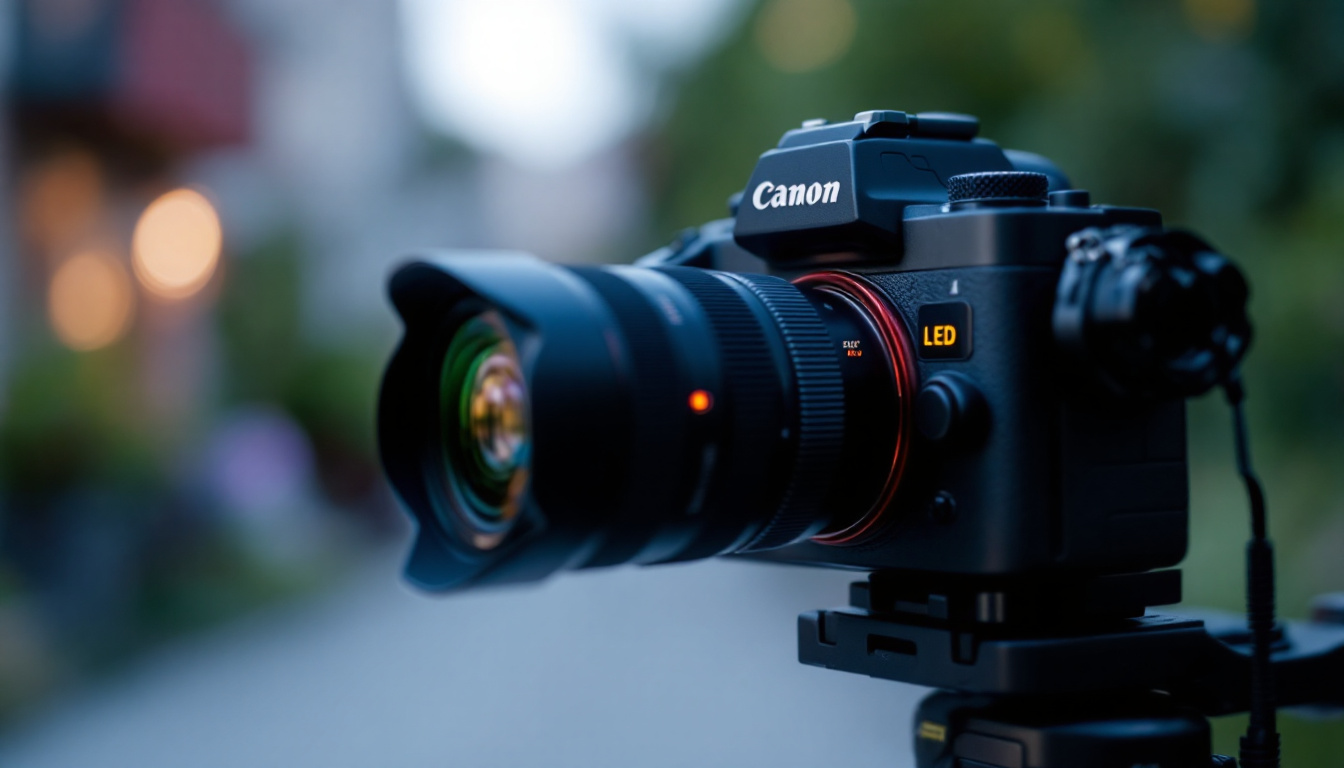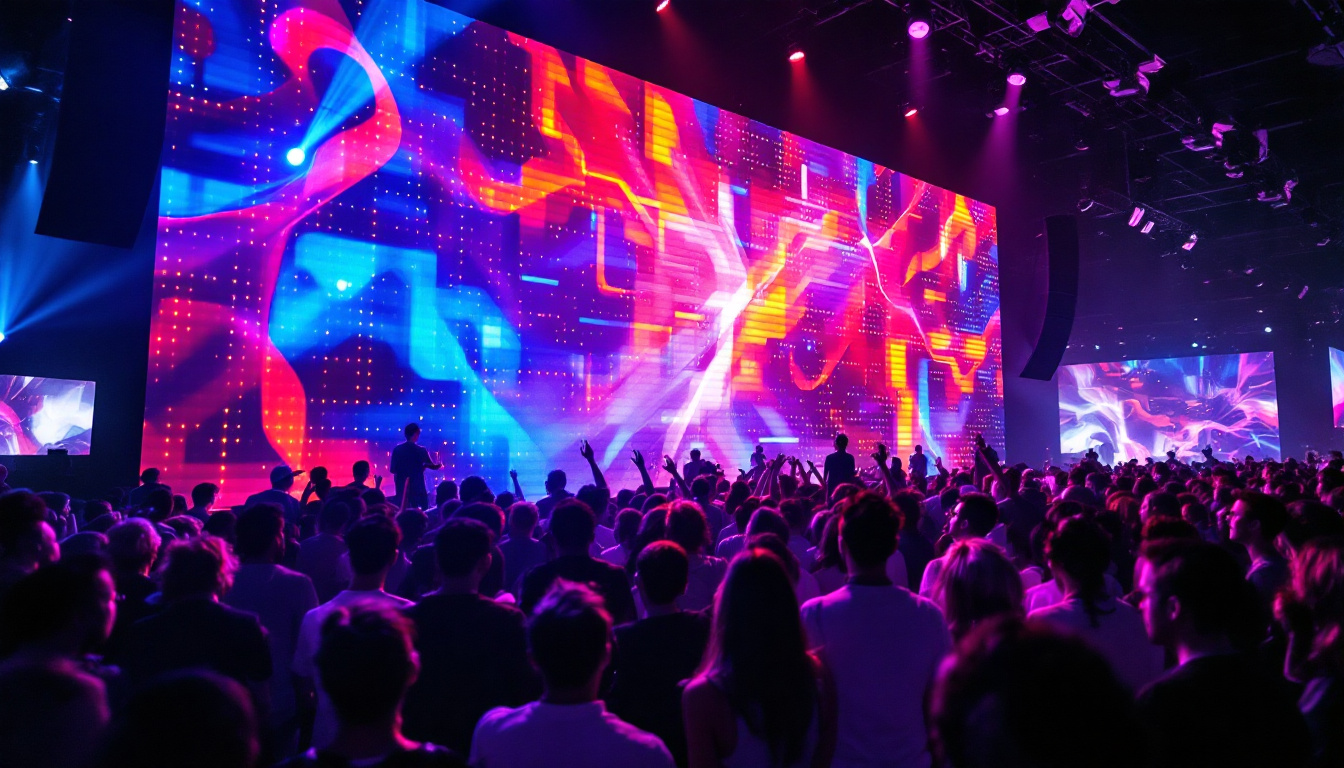In the ever-evolving landscape of retail, digital displays have emerged as a powerful tool for engaging customers and enhancing the shopping experience. Among the various types of digital displays, LED technology stands out for its vibrancy, versatility, and energy efficiency. This article delves into the world of LED displays, exploring their benefits, applications, and the future of digital signage in retail environments.
Understanding LED Technology
Light Emitting Diodes (LEDs) are semiconductor devices that emit light when an electric current passes through them. Unlike traditional incandescent bulbs, which produce light through heat, LEDs are energy-efficient and have a longer lifespan. This technology has revolutionized the way retailers communicate with their customers. With their ability to produce a wide spectrum of colors and brightness levels, LEDs have become an essential tool in modern marketing strategies, allowing businesses to create eye-catching displays that capture consumer attention.
In addition to their energy efficiency, LEDs also contribute to sustainability efforts. They consume significantly less power than conventional lighting solutions, which not only reduces electricity costs but also lowers carbon footprints. As businesses increasingly prioritize eco-friendly practices, the transition to LED technology aligns with broader environmental goals, making it a win-win for both retailers and the planet.
The Basics of LED Displays
LED displays consist of numerous tiny LEDs arranged in a grid, allowing for the creation of bright and colorful images. These displays can be used for various purposes, including advertising, information dissemination, and enhancing the overall ambiance of a store. The ability to display dynamic content makes LED displays particularly appealing in a retail setting. Retailers can easily update their messages, promotions, and visuals in real-time, ensuring that their advertising remains relevant and engaging to customers.
Moreover, the versatility of LED displays extends beyond simple advertisements. They can be programmed to showcase videos, animations, and even interactive content, providing a multi-sensory experience for shoppers. This capability not only draws customers into stores but also encourages them to spend more time exploring products and promotions, ultimately leading to increased sales and customer satisfaction.
Types of LED Displays
There are several types of LED displays, each designed for specific applications. The most common include:
- Indoor LED Displays: Typically used for in-store promotions and advertisements, these displays are designed to be viewed from a close distance. Their high resolution ensures that images and text are sharp and clear, making them ideal for conveying detailed information about products.
- Outdoor LED Displays: Built to withstand the elements, outdoor displays are larger and brighter, making them suitable for attracting attention from afar. These displays often feature weather-resistant technology and enhanced brightness to ensure visibility even in direct sunlight.
- Transparent LED Displays: These innovative displays allow viewers to see through them while still showcasing vibrant content, making them ideal for storefronts. They can create a unique shopping experience by blending digital content with physical products, allowing retailers to maintain an open and inviting atmosphere while still delivering impactful messaging.
Additionally, there are specialized LED displays such as flexible LED screens that can be shaped to fit unconventional spaces, and high-definition LED walls that provide stunning visuals for events and exhibitions. Each type of LED display serves a unique purpose, enabling retailers to choose the most effective solution for their specific marketing needs and customer engagement strategies.
Benefits of LED Displays in Retail
LED displays offer a multitude of advantages that can significantly enhance the retail experience. From improved visibility to cost savings, the benefits are compelling for retailers looking to invest in digital signage.
Enhanced Visibility and Engagement
One of the primary advantages of LED displays is their brightness and clarity. The vivid colors and high contrast make them stand out, capturing the attention of passersby. This enhanced visibility can lead to increased foot traffic and higher engagement rates with customers. Retailers can use dynamic content to create eye-catching promotions that resonate with their target audience. Furthermore, the ability to display high-definition video content can transform a simple advertisement into an immersive experience, drawing customers into the store and encouraging them to explore more. By utilizing motion graphics and interactive elements, retailers can create a captivating atmosphere that not only attracts attention but also fosters a deeper connection with their brand.
Energy Efficiency and Cost Savings
LED technology is known for its energy efficiency. Compared to traditional lighting solutions, LED displays consume significantly less power, resulting in lower energy bills. Additionally, the long lifespan of LEDs means reduced maintenance costs and fewer replacements, allowing retailers to allocate resources more effectively. This sustainability aspect not only contributes to cost savings but also enhances a retailer’s brand image as environmentally conscious. As consumers increasingly favor brands that prioritize sustainability, the use of energy-efficient LED displays can serve as a powerful marketing tool, showcasing a retailer’s commitment to reducing their carbon footprint while still delivering high-quality visual experiences.
Versatility in Content Display
LED displays can showcase a wide range of content, from static images to videos and animations. This versatility allows retailers to tailor their messaging based on promotions, seasonal events, or even real-time data such as inventory levels. The ability to update content remotely and instantly ensures that the information displayed is always relevant and engaging. Moreover, LED displays can be integrated with social media feeds, allowing retailers to showcase user-generated content and customer testimonials in real-time. This not only enhances the authenticity of the brand but also encourages customer interaction and participation, creating a community around the retail experience. Retailers can also utilize data analytics to determine which types of content resonate most with their audience, enabling them to refine their marketing strategies and maximize the effectiveness of their displays.
Applications of LED Displays in Retail
The applications of LED displays in retail environments are vast and varied. From enhancing brand visibility to improving customer engagement, these displays serve multiple purposes.
Advertising and Promotions
LED displays are ideal for advertising products and promotions. Retailers can create dynamic advertisements that capture attention and drive sales. For instance, a clothing store might use an LED display to showcase a new collection with vibrant visuals and animations, enticing customers to explore the offerings.
Wayfinding and Information
In larger retail spaces, LED displays can serve as wayfinding tools, helping customers navigate the store more efficiently. Interactive displays can provide information about product locations, store hours, and upcoming events. This functionality not only enhances the shopping experience but also reduces the need for additional staff to assist customers.
Brand Storytelling
LED displays can be used to tell a brand’s story, creating an emotional connection with customers. Retailers can showcase their values, mission, and unique selling propositions through engaging visuals and narratives. This storytelling approach can foster brand loyalty and encourage repeat visits.
Challenges and Considerations
While LED displays offer numerous benefits, there are also challenges and considerations that retailers must address when implementing this technology.
Initial Investment Costs
The initial cost of purchasing and installing LED displays can be significant. Retailers must weigh this investment against the potential return on investment (ROI). It’s essential to conduct a thorough analysis to ensure that the benefits of increased sales and customer engagement justify the upfront costs.
Content Management
Managing content on LED displays requires a strategic approach. Retailers need to ensure that the content is engaging, relevant, and updated regularly. This may involve dedicating staff or resources to content creation and management, which can be a logistical challenge for some businesses.
Technical Maintenance
Although LED displays are known for their durability, they still require regular maintenance to ensure optimal performance. Retailers must be prepared to address technical issues promptly and may need to invest in training staff or hiring external technicians for repairs.
The Future of LED Displays in Retail
The future of LED displays in retail looks promising, with advancements in technology and changing consumer behaviors shaping their evolution.
Integration with Augmented Reality (AR)
As augmented reality continues to gain traction, the integration of AR with LED displays presents exciting possibilities. Retailers can create immersive experiences that blend digital content with the physical store environment. For example, a customer could point their smartphone at an LED display to see additional product information or interactive elements, enhancing their shopping journey.
Personalization and Data-Driven Content
With the rise of data analytics, retailers can leverage customer data to create personalized content for LED displays. By analyzing customer preferences and behaviors, retailers can tailor their messaging to resonate with individual shoppers, increasing the likelihood of conversion. This level of personalization can significantly enhance the customer experience and drive sales.
Sustainability Trends
As sustainability becomes a priority for consumers, retailers are increasingly seeking eco-friendly solutions. LED technology is already more energy-efficient than traditional lighting, but future advancements may focus on further reducing environmental impact. Retailers may also explore options for recycling and repurposing old displays, aligning with sustainability goals.
Conclusion
LED displays represent a transformative force in the retail landscape, offering numerous benefits that enhance customer engagement and drive sales. From their vibrant visuals to their energy efficiency, these displays are versatile tools that can adapt to the ever-changing needs of retailers. While challenges exist, the potential for innovation and integration with emerging technologies positions LED displays as a key component of the future of retail. As businesses continue to explore the possibilities of digital signage, embracing LED technology will undoubtedly play a crucial role in shaping the shopping experience for years to come.
Discover LumenMatrix LED Display Solutions
Ready to elevate your retail space with the vibrant visuals and energy efficiency of LED displays? LumenMatrix is at the forefront of LED display technology, offering a wide array of innovative solutions tailored to your unique needs. From Indoor and Outdoor LED Wall Displays to specialized options like Vehicle, Sports, and Floor LED Displays, we have the tools to transform your visual communication. Embrace the future of retail with our Custom, All-in-One, and Transparent LED Displays, designed to captivate audiences and amplify your message. Check out LumenMatrix LED Display Solutions today and start creating unforgettable shopping experiences.

